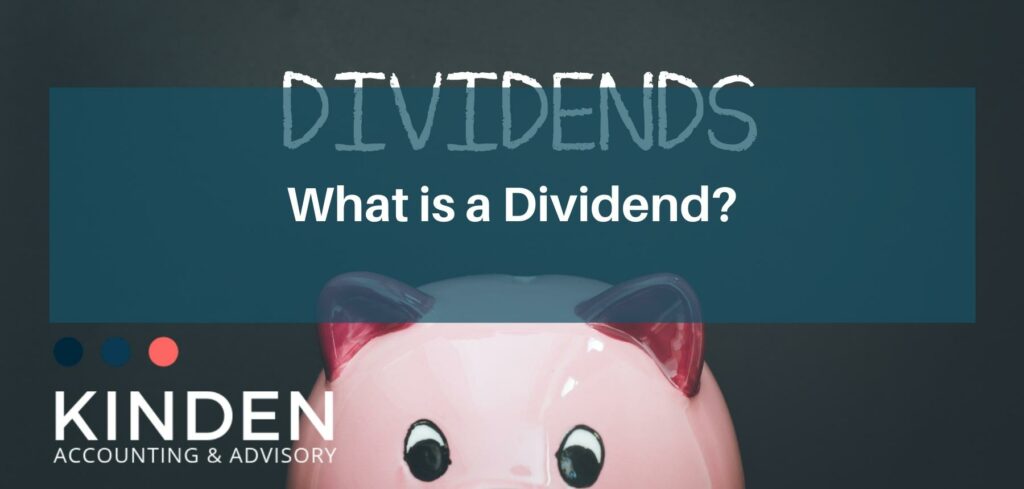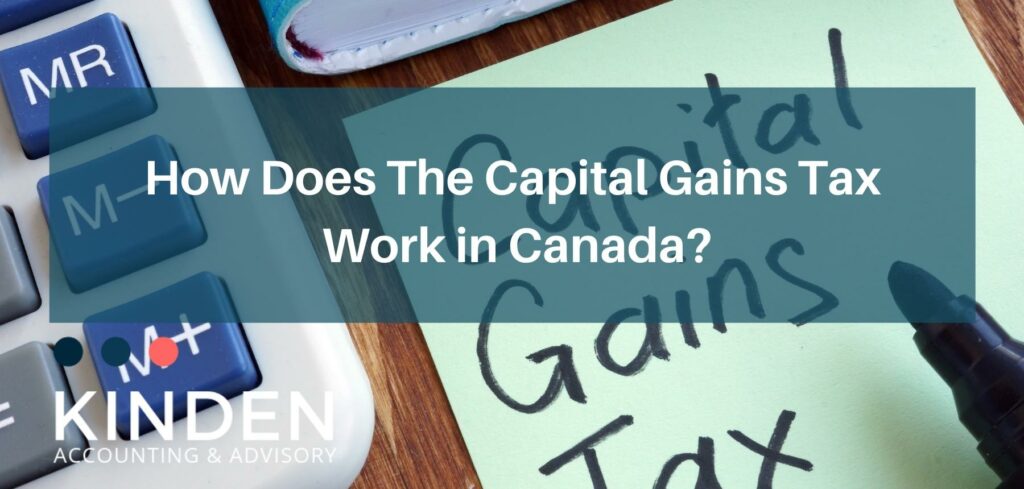In the past month, I’ve had countless clients ask me to explain how dividends are taxed in Canada. This has inspired me to write this article to explain to the average person how dividends are taxed in Canada. I think you’ll be surprised at how straight-forward it is.
To keep this simple, we will be looking at Federal taxation only. With that being said, it works the same way for Provincial taxation except that the rates are different. Also, this article is meant for general information purposes. It is not a substitute for your own research and analysis. It does not make you qualified to deal with corporate taxation matters. There is no substitute for consulting with an online accountant when it comes to tax matters.
What is a Dividend?

A dividend is money paid out of the profits of a corporation to the owners. The owners of a Canadian corporation are called the shareholders. The shareholder’s vote in a Board of Directors. The Board of Directors approves how much dividend income is tax-free in canada dividends through a Board Resolution. Usually, the Board Resolution will say a dollar value in dividend to be paid per share. For example, a Board of Directors might approve a dividend of $2.50 per share to Class A Common Shareholders. In summary, a dividend is money paid to shareholders on a per-share basis out of the profits of a corporation.
What is the Dividend Tax Rate in Canada?
According to Investopedia, as of the tax year for 2019, investors in Canada can expect to pay, at the highest income tax bracket as much as 29% on their dividends (tax on dividends).
A brief introduction to the small business deduction
It won’t be obvious why this matters right away but trust me – it will be important in the next section. In Canada, corporations which are considered a Canadian Controlled Private Corporation (CCPC) are eligible for a special tax deduction called the small business deduction. This is a significant tax reduction for CCPCs on their first $500,000 in active business income. We won’t expand on this any further. Just remember that the small business deduction reduces the taxes a corporation pays by a lot.
Eligible vs non-eligible dividends
In the tax world, there are two types of dividends; eligible and non-eligible dividends. Don’t overthink it; this only matters for taxes. At the end of the day, it’s still a dividend like we talked about in the first section. However, the way they are taxed is different. In general, the personal tax rates on eligible dividends are lower than the personal tax rates on non-eligible dividends. Here’s why.
Eligible Dividends
Eligible dividends are payments of profits to shareholders that have not benefited from the small business deduction or any other special tax rate. Since the Corporation paid more tax on the profits before paying the dividends, the income tax system is set up so that individuals pay less tax on eligible dividends compared to non-eligible dividends.
Non-Eligible Dividends
On the other hand, non-eligible Canadian dividends are payments of profits to shareholders that have benefited from the small business deductions or other special tax rates. Since the Canadian Corporation pays less tax on the profit, the income tax system is set up in such a way that individuals pay more tax on non-eligible dividends compared to eligible dividends.
There are a handful of other terms that come up when you’re talking about the tax of dividends in Canada. However, unless you’re a practicing accountant that is actually preparing and filing corporate income tax returns, all you really need is a basic understanding of the concepts.
Dividend buzz-words
There are a handful of other terms that come up when you’re talking about the tax of dividends in Canada. However, unless you’re a practicing accountant that is actually preparing and filing corporate income tax returns, all you really need is a basic understanding of the concepts.
Dividend Gross-Up
The dividend gross-up basically means that the CRA looks at the dividends you received and goes “yeah… I get that you received a non-eligible dividend of $1,000 but let’s just pretend it’s $1,160 and then tax you on that, okay?
Oh, wait! Those are eligible for taxable dividends? Let’s pretend it’s $1,380 instead!” Yes, that’s literally how it works – sounds terrible, right? Luckily, this is offset by this wonderful thing called a dividend tax credit.
Federal Dividend Tax Credit
Taxes have a way of being unnecessarily confusing. Remember how in the gross-up the CRA decided we needed to increase the taxable amount of dividends? Well, the CRA can be a little bit indecisive. Later on in the return, they realize they were a bit “extreme” so they give you some of that back in the form of the dividend tax credit. In fact, you get both a Federal and Provincial dividend tax credit.
General Rate Income Pool (GRIP)
This is an account that tracks the profits that a CCPC generates which are taxed at general corporate income tax rates. The amounts in the GRIP can be paid out by the CCPC as eligible dividends.
Low Rate Income Pool (LRIP)
This is an account that tracks the profits that a non-CCPC generates which were subject to reduced tax rates. A non-CCPC has to reduce the LRIP to zero through non-eligible dividends before it can pay eligible dividends.
Integration
Is a key concept in the tax system. Basically, integration means that no matter how taxable income flows through corporations and businesses to an individual, the tax rate on the income will be the same. This is why things like eligible and non-eligible dividends, the dividend gross-up, and the dividend tax credit exist.
Now, that doesn’t mean that there’s no point in tax planning; there are opportunities that exist through the concept of tax deferral. Think about it this way; you will pay tax, but tax deferral gives you the ability to control when you pay those taxes. Planning the timing of taxation can provide advantages and opportunities to ensure you do not pay more than your fair share of taxes.
Things worth thinking about
So now that you understand dividends, we can talk about things that a business owner or investor might want to think about as it relates to dividend income.
Dividends:
- are not considered earned income. This means that dividend income does not contribute to your RRSP limit.
- are not subject to CPP contribution requirements, meaning you do not have to make CPP contributions on dividend income
- are not deductible to the Corporation that pays them, meaning they are paid out of after-tax tax dollars. Salary is deductible.
How Does The Capital Gains Tax Work in Canada?

This is due to the sale of investments in the ETF portfolio at a higher price than when they were purchased. Capital gains are taxed at a rate of 50% in Canada and the investor must include this in their taxable income.
Even though only half of the capital gains are included in taxable income, the capital gains marginal tax rate is 12.50 percent or half of the regular income marginal tax rate. The marginal tax rate for qualifying dividends is only 2.57 percent because of the dividend tax credit.
Are dividends included in taxable income in Canada?
When a shareholder receives a dividend, they must include it in their tax return. Dividends are federal and provincial taxes. The tax component of qualified dividends is taxed at 15.0198 percent, while the tax portion of non-eligible dividends is taxed at 9.031%.
Are Dividends Taxed Twice in Canada?
The laws for taxable dividend income in Canada are straightforward in theory. Individuals who receive dividends from Canadian corporations are entitled to credits for taxes (Canadian Dividend Tax Credit) that the firms have previously paid to prevent double taxation.
Dividends Received from Real Estate Investment Trusts
If you’re going to invest in a real estate investment trust (REIT), it’s typically a good idea to do so in a registered account. The payment from a REIT is referred to as a distribution rather than a dividend.
A distribution is not the same as a dividend since it may contain dividends, capital gains, a capital return, interest, or other income. Because various types of payments might be taxed at different rates, keeping a REIT in a registered account will make it easier to deal with taxation.
What about Applying a Dividend Tax Credit to Foreign Dividends?
You can’t use the Canadian dividend credit on equities that aren’t based in Canada, as previously stated. The majority of overseas profits are subject to withholding tax, which varies by country. You should consult an accountant before investing in stocks outside of Canada.
In Conclusion
Hopefully, this has given you a better understanding of how dividends are taxed in Canada. Now that you have an understanding of dividends, it’s time to secure a tax expert to help you optimize your tax profile.
In need of small business accounting services for your startup? Leave your financial hassle and stress behind and depend on our online accounting firm! Get in touch with us today to see how we can help your Canadian company!



